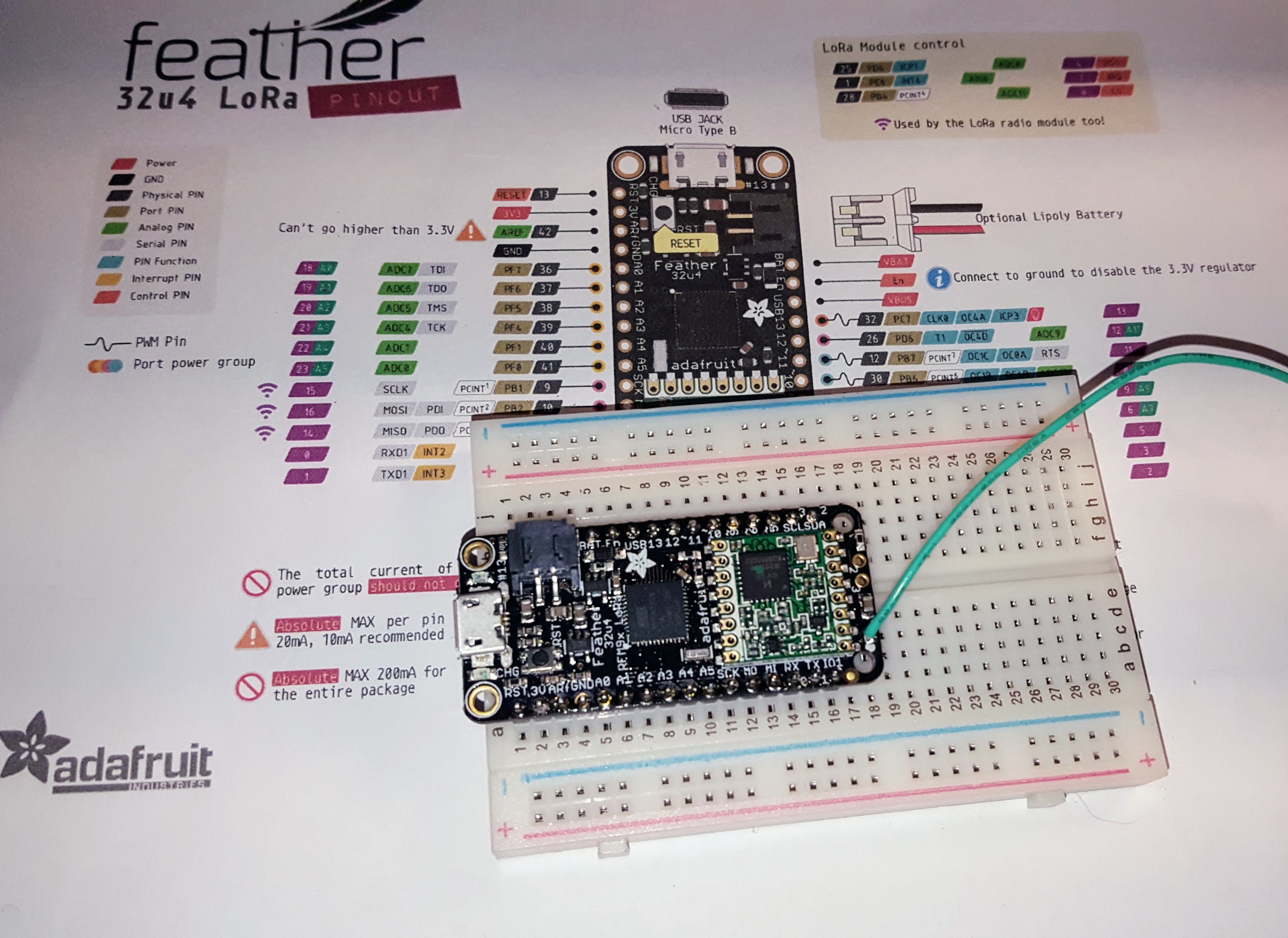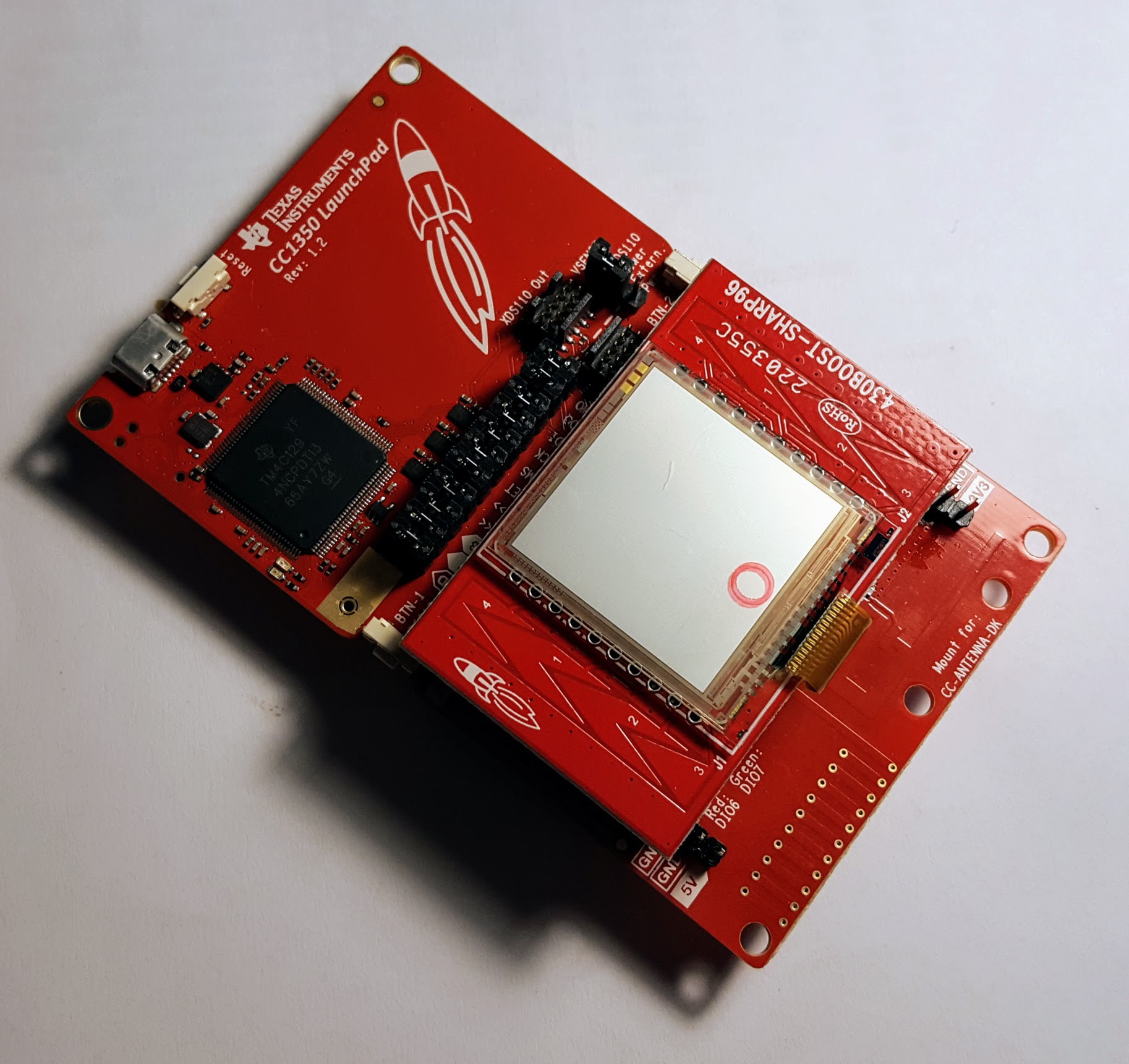To get up and running quickly for this project I decided to use off off the shelf modules wherever possible for initial testing to make plug&play prototyping with a breadboard easy.
Microcontroller and radio
I will be using Adafruit Feather 32u4 LoRa dev boards for initial testing. They were available form my local supplier, so I could quickly get my hands on them. The boards have a 868Mhz SX1272 LoRa radio module onboard, as well as Lipo battery charger. I have no experience with ARM boards, so decided to stick with the 8 bit ATMega version of the board for a start, which I have some experience with.

The other MCU/radio combination I will be testing is the new Texas Instruments CC1350 Dual Band Wireless MCU. It integrates an ARM M3 processor, a Sub-Ghz radio, BLE radio, and an interesting low power 16 bit "Sensor Controller" processor on a single chip. This chip is also available in a version without BLE, as the CC1310. Although the learning curve to get this chip working for my purposes will be much steeper, I believe there is a lot of potential.

TI claim that the chip is extremely low power, as well as long range with the Sub-Ghz radio. The BLE allows for Over-the-Air updating from a smartphone/tablet, which can be very handy in the field. The on-board "Sensor Controller" is a very low power 16 bit processor that can function to independently check sensor inputs, and only wakes up the powerful ARM processor when absolutely necessary.
I have ordered the CC1350 Launchpad Dev board, which I intend to use as a gateway for testing, as well as 2 CC1350 SensorTag dev kits, which integrate 10 environmental sensors and a coin cell battery holder in a very small package. The SensorTags also allow add-on boards to be added on top of them. The TI website has some very detailed tutorials and examples which will hopefully speed up development.
I must give some credit to Shantam Raj with his SUN Project. I was introduced to the CC1350/CC1310 chips while reading his project logs.
GSM connectivity
I am considering adding a GSM modem as a modular add-on to the tags, to extend the range. My motivation for not making this standard on every tag is as follows:
- It would increase the cost and power consumption, even if only slightly. I want the tags to be as cheap as possible, to make equipping every single animal on a farm a viable option.
- Some of farms are extremely isolated and might not have GSM coverage.
- Tags can be cut off by thieves, and often cattle are simply slaughtered in the field where they graze. Therefor my focus will be on detecting theft/disturbances as they start, not after it is done
Where GSM is available, some of the tags in a group/heard can have the GSM module installed, to allow that particular tag to also act as a gateway for the other tags within range of the Sub-Ghz radio, snd so extend the detection range.
 Danie Conradie
Danie Conradie
Discussions
Become a Hackaday.io Member
Create an account to leave a comment. Already have an account? Log In.